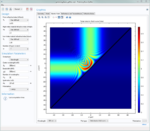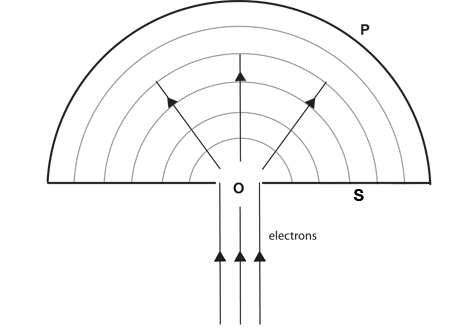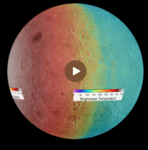Here is some further reading on the selection and absorption of light.
According to Classical Theory Of Reflection Of Light, light always travels the least action path. This is Fermat's Principle. Thus, when it hits a smooth surface, angle of incidence is always equal to angle of reflection.
Light is an electromagnetic wave. The oscillating electromagnetic field causes the electrons in a material to oscillate. In general, whether they be bound or free electrons, the total charge of the material is neutral. As the electrons are lighter than the positive charges, the electron motion relative to the heavy nucleus will constitute an oscillating dipole, which re-radiates the light. As the material can be considered have a uniform distribution of dipoles all oscillating in phase, the net effect is a reflected wave.
Light is an electromagnetic wave that travels through space and transports energy. The intensity of the electric field of a light wave is exactly proportional to the square of its amplitude, hence energy per unit area and unit time is defined as intensity. This energy is delivered in discrete units called photons rather than in a continuous stream. Light particles are called photons. The energy carried by each photon can be calculated by the formula of energy of the photon, which is given as E (Photon energy) = h (Plank’s Constant) x f (electromagnetic frequency). This energy of the photon equation is also known as Planck-Einstein Relation.
Regarding the single photon response of a mirror. This is usually never directly treated quantum mechanically because it is evident that mirrors work in exactly the same way for single photons as for any light. However, we run into trouble if we try to interpret the interaction as an absorption and reemission event involving a single atom in the material. That's because we lose the mechanism that directs the reemitted photon in the reflected direction. A single atom can radiate in a wide range of directions according to the scattering crossection, whereas the reflected direction is very precise. When treating reflection at the atomic scale, you need to include the photon spatial mode function and then the interaction of all the constituent atoms with the distributed photon spatial mode. This means all the atoms that overlap the mode will be synchronously driven by the photon. The mathematics will include the coherent addition of the scattering amplitudes of all emitters. The scattering amplitudes will in turn comprise an integral that samples all atomic transitions, although no particular transition will be excited. The overall effect will be as described, all the atoms acting coherently as a phased array of antennae.
Note the coherent addition of many emitters is actually used in modern phased array radars, rather than use the traditional radar dish. This is exactly the same principle as how a mirror works.
Reflection is rather interesting from a quantum perspective. That's because we can see reflections, or at least perceive reflections, yet the interaction with a mirror does not count as a measurement!
In quantum mechanics, the measurement defines how we perceive the quantum world. In fact, the measurement makes the quantum world appear classical. However, we know that there is quantum strangeness lurking underneath through the observation of interference effects. That's most well-known in the Young's double slit experiment. Yet, more prosaically, it also underlies the phenomenon of reflection.
Reflection is not the same as absorption and reemission of the light. It is a coherent phenomenon that relies on a nonlocal distribution of dipoles all radiating in phase. This is where the single photon as a point particle fails. A single photon can only be reflected if it coherently interacts with the entire reflecting surface, not just a single atom in the material.
Furthermore, if we want a little more detail; the mirror response is linear, which means that the incoming light can be arbitrarily mixed with random frequency and phase, but the medium will respond precisely in a way that is consistent with the light being a sum of coherent parts, and reflect all parts equally.
Now, comes the Quantum Theory Of Reflection Of Light. Sir Richard Feynman came for help here. He did a great contribution in Quantum Electrodynamics. According to him, light travels every possible path after getting reflected from the smooth surface and all are least action paths with certain probabilities. We measure all possible paths through a measurement tool of time ticking.
For every frequency of light, there is a particular time ticking. We note the ticking taken by light to cover the first path from source to detector and we get a certain direction. We repeat it for every path taken by light and add all directions using Addition Of Vectors Concept*.
We will see that the direction of vector is more inclined to the path where angle of incidence is equal to angle of reflection. There is great certainty for this to happen compared to other paths taken by light. In this way, we conclude that light has maximum chances to follow the path where angle of incidence is equal to angle of reflection.

The incident ray interferes on the material surface. The wavefront suffers a 180 degree shift, on striking the surface, because it encounters “resistence” (if the beam is below the critical angle, we get total reflection). Superficially similar to the geometric optics case, because the slight imperfections in the mirror and the material properties can mean that the reflected wavefront is shifted in wavelength, distorted, and certainly attenuated.
See: https://www.quora.com/What-is-the-quantum-theory-of-reflection-of-light
See: https://collegedunia.com/exams/phot...-and-solved-examples-chemistry-articleid-1781
* Addition of Vectors Concept: We cannot add two vectors directly like numbers to get the result as they have magnitude as well as direction.
A variety of mathematical operations can be performed with and upon vectors. One such operation is the addition of vectors. Two vectors can be added together to determine the result (or resultant). This process of adding two or more vectors has already been discussed in an earlier unit. Recall in our discussion of Newton's laws of motion, that the net force experienced by an object was determined by computing the vector sum of all the individual forces acting upon that object. That is the net force was the result (or resultant) of adding up all the force vectors.
Assume that a car is moving 10 miles to the north and then 10 miles to the south. We can easily evaluate the total distance traveled by car by adding these two numbers like 20 miles. But in the case of vector addition, the result is zero.
The reason is that the north and south directions are opposite to each other, which is why they cancel out, and so the vector sum will be zero. For the addition of 2 vectors, we can say that “vector sum.”
Here are some tips to remember for vector addition:
See: https://www.vedantu.com/iit-jee/addition-of-three-vectors
See: https://www.physicsclassroom.com/class/vectors/Lesson-1/Vector-Addition
See: https://www.vedantu.com/physics/addition-of-vectors
All materials containing electrons and nuclei will respond to an incident electromagnetic field. The field will distort the charge distribution in direct proportion to the strength of the field. For an oscillating electromagnetic field, the distortion is periodic and comprises an effective distribution of oscillating dipoles in the mirror. The oscillations of the distribution are all synchronised with the light so they act as the source for a reflected field. The direction of the reflected field is determined by the phase gradient along the distribution, which determines the angle of reflection.
Hartmann352
According to Classical Theory Of Reflection Of Light, light always travels the least action path. This is Fermat's Principle. Thus, when it hits a smooth surface, angle of incidence is always equal to angle of reflection.
Light is an electromagnetic wave. The oscillating electromagnetic field causes the electrons in a material to oscillate. In general, whether they be bound or free electrons, the total charge of the material is neutral. As the electrons are lighter than the positive charges, the electron motion relative to the heavy nucleus will constitute an oscillating dipole, which re-radiates the light. As the material can be considered have a uniform distribution of dipoles all oscillating in phase, the net effect is a reflected wave.
Light is an electromagnetic wave that travels through space and transports energy. The intensity of the electric field of a light wave is exactly proportional to the square of its amplitude, hence energy per unit area and unit time is defined as intensity. This energy is delivered in discrete units called photons rather than in a continuous stream. Light particles are called photons. The energy carried by each photon can be calculated by the formula of energy of the photon, which is given as E (Photon energy) = h (Plank’s Constant) x f (electromagnetic frequency). This energy of the photon equation is also known as Planck-Einstein Relation.
Regarding the single photon response of a mirror. This is usually never directly treated quantum mechanically because it is evident that mirrors work in exactly the same way for single photons as for any light. However, we run into trouble if we try to interpret the interaction as an absorption and reemission event involving a single atom in the material. That's because we lose the mechanism that directs the reemitted photon in the reflected direction. A single atom can radiate in a wide range of directions according to the scattering crossection, whereas the reflected direction is very precise. When treating reflection at the atomic scale, you need to include the photon spatial mode function and then the interaction of all the constituent atoms with the distributed photon spatial mode. This means all the atoms that overlap the mode will be synchronously driven by the photon. The mathematics will include the coherent addition of the scattering amplitudes of all emitters. The scattering amplitudes will in turn comprise an integral that samples all atomic transitions, although no particular transition will be excited. The overall effect will be as described, all the atoms acting coherently as a phased array of antennae.
Note the coherent addition of many emitters is actually used in modern phased array radars, rather than use the traditional radar dish. This is exactly the same principle as how a mirror works.
Reflection is rather interesting from a quantum perspective. That's because we can see reflections, or at least perceive reflections, yet the interaction with a mirror does not count as a measurement!
In quantum mechanics, the measurement defines how we perceive the quantum world. In fact, the measurement makes the quantum world appear classical. However, we know that there is quantum strangeness lurking underneath through the observation of interference effects. That's most well-known in the Young's double slit experiment. Yet, more prosaically, it also underlies the phenomenon of reflection.
Reflection is not the same as absorption and reemission of the light. It is a coherent phenomenon that relies on a nonlocal distribution of dipoles all radiating in phase. This is where the single photon as a point particle fails. A single photon can only be reflected if it coherently interacts with the entire reflecting surface, not just a single atom in the material.
Furthermore, if we want a little more detail; the mirror response is linear, which means that the incoming light can be arbitrarily mixed with random frequency and phase, but the medium will respond precisely in a way that is consistent with the light being a sum of coherent parts, and reflect all parts equally.
Now, comes the Quantum Theory Of Reflection Of Light. Sir Richard Feynman came for help here. He did a great contribution in Quantum Electrodynamics. According to him, light travels every possible path after getting reflected from the smooth surface and all are least action paths with certain probabilities. We measure all possible paths through a measurement tool of time ticking.
For every frequency of light, there is a particular time ticking. We note the ticking taken by light to cover the first path from source to detector and we get a certain direction. We repeat it for every path taken by light and add all directions using Addition Of Vectors Concept*.
We will see that the direction of vector is more inclined to the path where angle of incidence is equal to angle of reflection. There is great certainty for this to happen compared to other paths taken by light. In this way, we conclude that light has maximum chances to follow the path where angle of incidence is equal to angle of reflection.

The incident ray interferes on the material surface. The wavefront suffers a 180 degree shift, on striking the surface, because it encounters “resistence” (if the beam is below the critical angle, we get total reflection). Superficially similar to the geometric optics case, because the slight imperfections in the mirror and the material properties can mean that the reflected wavefront is shifted in wavelength, distorted, and certainly attenuated.
See: https://www.quora.com/What-is-the-quantum-theory-of-reflection-of-light
See: https://collegedunia.com/exams/phot...-and-solved-examples-chemistry-articleid-1781
* Addition of Vectors Concept: We cannot add two vectors directly like numbers to get the result as they have magnitude as well as direction.
A variety of mathematical operations can be performed with and upon vectors. One such operation is the addition of vectors. Two vectors can be added together to determine the result (or resultant). This process of adding two or more vectors has already been discussed in an earlier unit. Recall in our discussion of Newton's laws of motion, that the net force experienced by an object was determined by computing the vector sum of all the individual forces acting upon that object. That is the net force was the result (or resultant) of adding up all the force vectors.
Assume that a car is moving 10 miles to the north and then 10 miles to the south. We can easily evaluate the total distance traveled by car by adding these two numbers like 20 miles. But in the case of vector addition, the result is zero.
The reason is that the north and south directions are opposite to each other, which is why they cancel out, and so the vector sum will be zero. For the addition of 2 vectors, we can say that “vector sum.”
Here are some tips to remember for vector addition:
- The addition of vectors is accomplished geometrically but not algebraically.
- Vector quantities should behave as independent of each other quantities before the addition.
- From the vector addition, we only conclude the resultant of a number of vectors propagated on a body.
- From vector addition, we obtain the resultant vector, which is not dependent on order of the summation of vectors as
→A+→B=→B+→A
See: https://www.vedantu.com/iit-jee/addition-of-three-vectors
See: https://www.physicsclassroom.com/class/vectors/Lesson-1/Vector-Addition
See: https://www.vedantu.com/physics/addition-of-vectors
All materials containing electrons and nuclei will respond to an incident electromagnetic field. The field will distort the charge distribution in direct proportion to the strength of the field. For an oscillating electromagnetic field, the distortion is periodic and comprises an effective distribution of oscillating dipoles in the mirror. The oscillations of the distribution are all synchronised with the light so they act as the source for a reflected field. The direction of the reflected field is determined by the phase gradient along the distribution, which determines the angle of reflection.
Hartmann352









